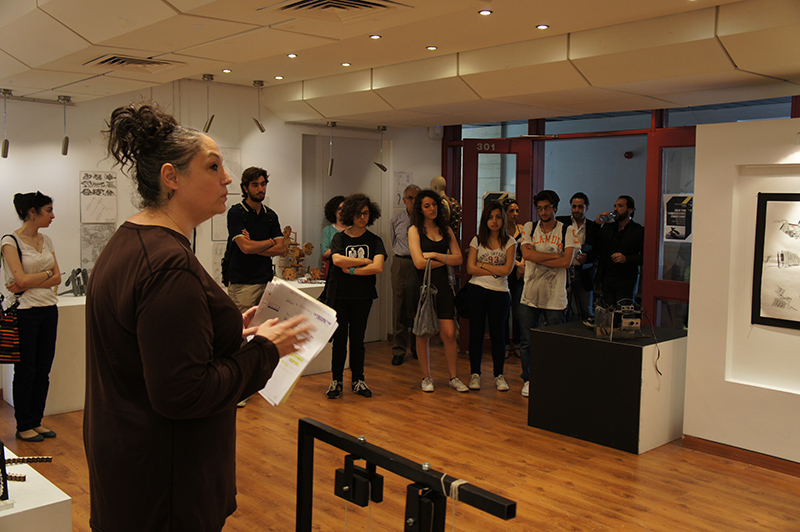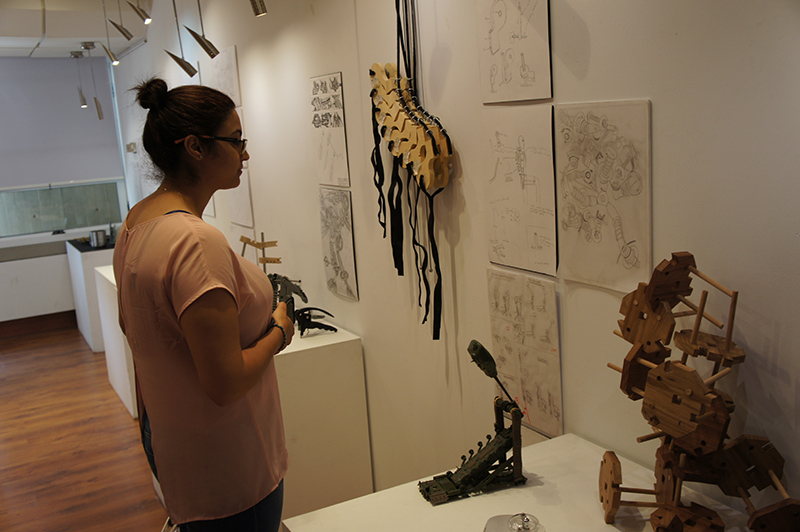In with the Old and Out with the New
Who knew that a household eggbeater could inspire a mobile electric generator that can power a cell phone? Joseph Haddad started his project by integrating the whisks with a modular system, which gave him an opportunity to explore the shapes and the movements of his object. This, in turn, inspired a device that used the kinetic energy generated from the act of walking to produce electricity to power an attached cell phone charger.
Innovative processes like Joseph’s were found on the Byblos campus on May 27, when the Foundation program in the School of Architecture & Design organized a one-day show at the Rima Hourani Hall, featuring the projects of around 30 of its first-year students. The instructors selected the works to be exhibited shortly after each student had been assessed and graded by a jury.
Faculty, students, and design enthusiasts alike were invited to tour the exhibition, which consisted of sketches and conceptual art, as well as a variety of innovative design contraptions.
Students were asked to take existing concepts and objects and reinterpret them through exploration and experimentation to find new perspectives on their potential. Each instructor worked with their students using their own method.
“As long as we know what the learning outcomes are, we’re free to choose the theme, the process, whatever we want,” says Christine Kettaneh, one of the instructors. “We’re creating from something that you find, something that goes into a certain process until you reach a different world, with a different understanding, with a different perception.”
One student, Sabine Dina, brought a 1952 pinwheel calculator into the studio and went through an elaborate process that included mapping the intricate pieces of the object with technical precision and manifesting an emotional rendering of the model. She then delved into the concept of how the numeric values control and take hold of modern civilization in many aspects by repurposing the calculator into a device that used tracks, magnets, and marbles to mesmerize and take hold of its spectators.
“We usually introduce the students to 2D work. 2D means anything related to painting, technical drawing, drafting, precision drawing and expressive drawing, paintings and sketching. We use an assortment of woods and metals for 3D materials in the workshop below,” associate chair Silia Abou Arbid explains. “All sorts of materials are introduced to them to have a kind of awakening, so that later on they can use them more specifically in their buildings or interiors, or even display design in terms of graphics.”
The innovative approaches taken by the students demonstrated a broad range of talents and interests that suggest bright things to come.

